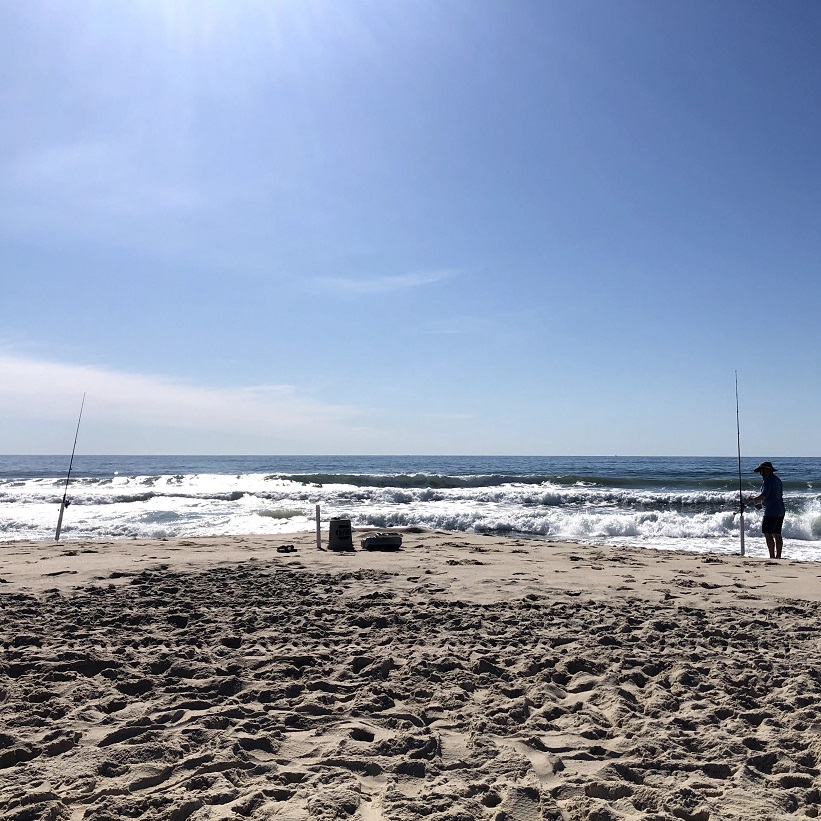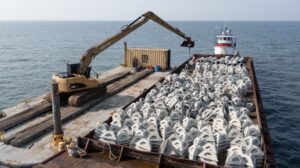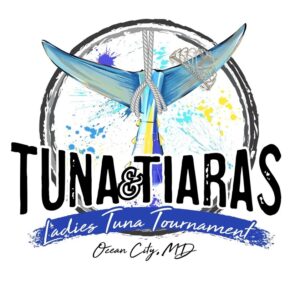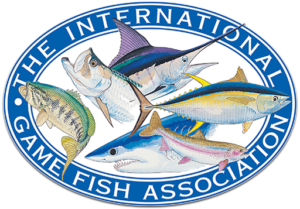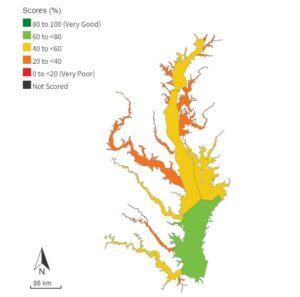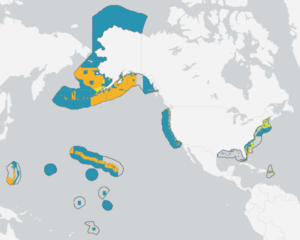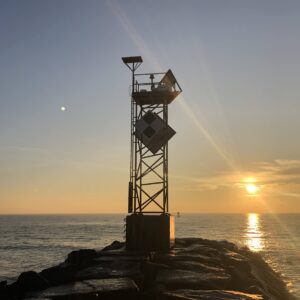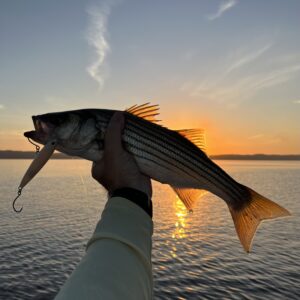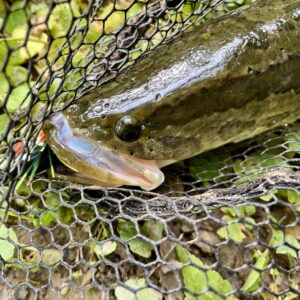Welcome to the Weekly Creel, a compilation of regional news and announcements for anglers and outdoor enthusiasts of the Chesapeake Bay region. Please email us directly at editor@reelchesapeake.com to have your organization’s news item or event listing considered for next week’s column. Per usual, here are direct links to the lastest, local fishing reports from Reel Chesapeake, On The Water, Maryland Department of Natural Resources, Anglers Sports Center, and FishTalk Magazine. This week’s catch also includes…
15 Maryland State Parks Receive Grants
The Friends of Maryland State Parks Foundation recently awarded 19 grants totaling $31,280 to Maryland State Parks statewide, from the shores of Assateague Island State Park (pictured above) to the mountainous New Germany State Park, and many between. Through the organization’s “Small Grants, Big Impact” initiative, these funds will provide resources to parks throughout the state for fishing education, bike repair stands, reforestation, and the purchase of kayaks and paddle boards.
“We value our partnership with the Friends of Maryland State Parks and their contributors as it allows us to support and maintain several community-based programs,” said Maryland Park Service Acting Superintendent Ranger Angela Crenshaw. “As the name of this program states, these small grants provide an opportunity for our staff to develop additional projects that have a big impact on the services we provide.”
Through its Small Grants program, begun in 2020, the nonprofit provides $2,000 grants to state parks to help them achieve their mission to provide for wise stewardship and enjoyment of Maryland’s public lands. The full list of grants is available on the Friends of Maryland State Parks website.
New Reef Created in Tangier Sound
On June 9th and 13th, Coastal Conservation Association (CCA) Maryland and its partners deployed more than 220 reef balls, 550 reef pyramids, and 30 pieces of concrete pipe at the Janes Island artificial reef site in Tangier Sound. The permitted reef site is approximately 3.3 miles WSW of Crisfield and 0.9 miles south of the Janes Island Lighthouse. The approximate center coordinate of this reef deployment is: 37 57′ 02.152″N -75 54’57.276″
CCA’s “Living Reef Action Campaign” (LRAC) is CCA’s flagship habitat and education program that since 2015 has engaged thousands of students and community members across Maryland and Virginia in hands-on, environmental educational experiences. This volunteer driven initiative helps rebuild the Bay’s habitat while inspiring stewardship of our marine resources.
“We are honored to work with Maryland’s Department of Natural Resources, the Ocean City Reef Foundation, Kinsley Construction, Murtech Marine Construction, Idealease of Baltimore, and education and community partners from throughout the region to build this important reef habitat,” said David Sikorski, executive director of CCA Maryland. “This Janes Island reef enhancement is yet another example of CCA Maryland’s commitment to rebuilding marine habitat in Chesapeake Bay and connecting communities to what is often out of sight beneath the waters of the Bay.” Photograph courtesy CCA Maryland.
Tunas & Tiaras “Tuna”ment Takes Over OC This Weekend
Billed, “The World’s Only Ladies Tuna Tournament,” the 3rd annual Tunas & Tiaras fishing tournament officially started yesterday with lines in at 7 a.m. in the blue water off Ocean City, Maryland. Over two days, 57 boats with 288 lady anglers will fish hard for bigeye, yellowfin, bluefin, longfin, wahoo, and mahi. Today’s weigh-in will be held 4 to 7 p.m. at the Ocean City Fishing Center, with the heavist fish and stringers taking honors when all are weighed and vetted against IGFA rules. The private awards ceremony/party will be held 8 p.m. to midnight at Wild Bills in Ocean City. Tournament proceeds benefit Women Supporting Women, a grass-roots organization founded in 1993 to provide awareness, education, and support to all those affected by breast cancer. Learn more about Tunas & Tiaras at the tournament website.
IGFA Launches Billfish Research & Conservation Campaign
The International Game Fish Association (IGFA) has announced the launch of its Billfish Research and Conservation Endowment Campaign, an ambitious initiative focused on ensuring the future of these iconic species. The initiative will provide long-term funding solutions that support studies that augment data on billfish biology and ecology, implement international management measures to improve billfish abundance, and enhance recreational fisheries to promote sustainable sporting opportunities and economic growth.
Backed by a generous planned gift of approximately $1.3 million and a matching gift of $1 million, the campaign aims to raise an additional $1 million. This collaborative endeavor will initially result in a robust $3.3 million endowment dedicated solely to billfish research and conservation that will be added to and grow over time.
Comprised of nine dynamic species of marlin, sailfish, and spearfish, billfish provide both significant recreational and economic value on a global scale. In addition to playing a crucial role in the balance of marine ecosystems worldwide, estimates show that in the Caribbean region alone the annual expenditure for billfish anglers reaches as much as $3.5 billion. Despite their vast economic and ecological importance, billfish populations have been severely depleted, necessitating an urgent call to action. The Billfish Research and Conservation Endowment Campaign will address these issues by establishing a dedicated fund that can grow in perpetuity and ensure a sustainable future for billfish stocks worldwide. To learn more about the IGFA Billfish Research and Conservation Endowment Campaign, visit igfa.org/igfa-billfish-endowment.
Study Shows Chesapeake Bay Health Improving
Every other week there seems to be a new Chesapeake Bay study released of one sort or another and with mixed assesments—some good, most bad. Well, here’s some mildly good news. The overall health of the Chesapeake Bay is showing significantly improving trends over time, but some regions still score poorly, reported the University of Maryland Center for Environmental Science (UMCES) in its annual Chesapeake Bay and Watershed Report Card released last week. Similar to 2021, the overall Chesapeake Bay received a C grade.
“While the trajectory of improvements, particularly concerning nutrients in the Bay, is in the right direction, we need to pick up the pace of restoration so that we can hit our nutrient reduction targets in the future and ensure our resilience to climate change,” said Peter Goodwin, president of the UMCES.
The overall Bay health score has increased by six points in the past two years, an encouraging sign in the recovery of the Bay. Of the seven indicators, there were improvements in water clarity, nitrogen, phosphorus, and aquatic grasses. Although conditions in the bay overall are improving, many bay tributaries still have poor scores with a concerning trend of poor scores in the Eastern Shore watersheds. Read the full report here.
72% of Federal Waters Classified as “Conservation Areas”
The nation’s eight regional fishery management councils (Councils) have released a first-ever synthesis of conservation areas in federal waters of the United States. The report, titled An Evaluation of Conservation Areas in the U.S. Exclusive Economic Zone, identifies hundreds of conservation areas covering nearly three quarters of federal waters. These findings demonstrate that a large portion of federal waters are protected from fishing activities that could negatively impact the environment.
A newly developed, rigorous review process included defining a “conservation area” and then screening each area relative to qualifying criteria based on a combination of international standards for conservation and the America the Beautiful principles.
Based on those criteria, 648 conservation areas were idendified covering more than 72 percent, or nearly 3.4 million square miles, of federal waters. The report includes an in-depth examination of fishing gear restrictions, with a focus on various configurations of “bottom tending” gear which contact the sea floor. According to the report, bottom trawling is prohibited in over half of U.S. federal waters, and over a third of the U.S. federal waters include prohibitions on all bottom tending gears. For more information visit the Area-Based Management webpage.
New Education Center & Horse Stables on National Mall
This week, a new, state-of-the-art, and sustainable United States Park Police Horse Stables and Wells Fargo Education Center was unveiled in a ceremony and ribbon-cutting event. The milestone project was fully funded by supporters of the Trust for the National Mall, including Wells Fargo and Campaign Chair Sheila Johnson.
This facility, built by the Trust for the National Mall in partnership with the National Park Service and the U.S. Park Police, replaces the original horse stables that were built as a temporary facility for the 1976 Bicentennial. The new facility was built as part of the Trust and National Park Service preparations for the 2026 semiquincentennial—the celebration of America’s 250th anniversary where the National Mall will play center stage.
The new Wells Fargo Education Center, located on the National Mall near the Korean Veterans War Memorial, will be open Thursday through Sunday from 9 a.m. to 5 p.m. and will be staffed by volunteers working with the National Park Service and the Trust for the National Mall. The education center includes video exhibits, interpretive panels, tactile displays featuring equipment and tack, and opportunities to view the horses in their paddocks and grooming stall. For additional information about the U.S. Park Police Horse Stables and Education Center project visit: nationalmall.org/content/horse-stables. Photograph courtesy Trust for the National Mall.
Lastly…Happy Father’s Day!
Cheers to all the dads out there! Especially to my own, who introduced me to the sport of angling. I fondly recall trips to Tuckahoe Creek and lake as a child with my father. We also brought poles and gear along for many camping trips, catching stringers of panfish or cats at every opportunity. In Ocean City, Maryland, my late-grandfather fished through the fall striper and bluefish season every year of his retirement from his 142nd street beachfront condo. Nearly every visit I made there, I gave surfcasting a shot. I still have some of his gear in my possession. And today, I love taking my young children fishing on the Severn River or to sandbars along creeks and hiking trails in Central Maryland.
Angling is a generational sport that can be passed down to our youth…time and again. And for many of us, we have our fathers to thank for doing so. Happy Father’s Day!
And that’s a wrap for this week’s Creel. If you have news to share, please send an email to editor@reelchesapeake.com.

